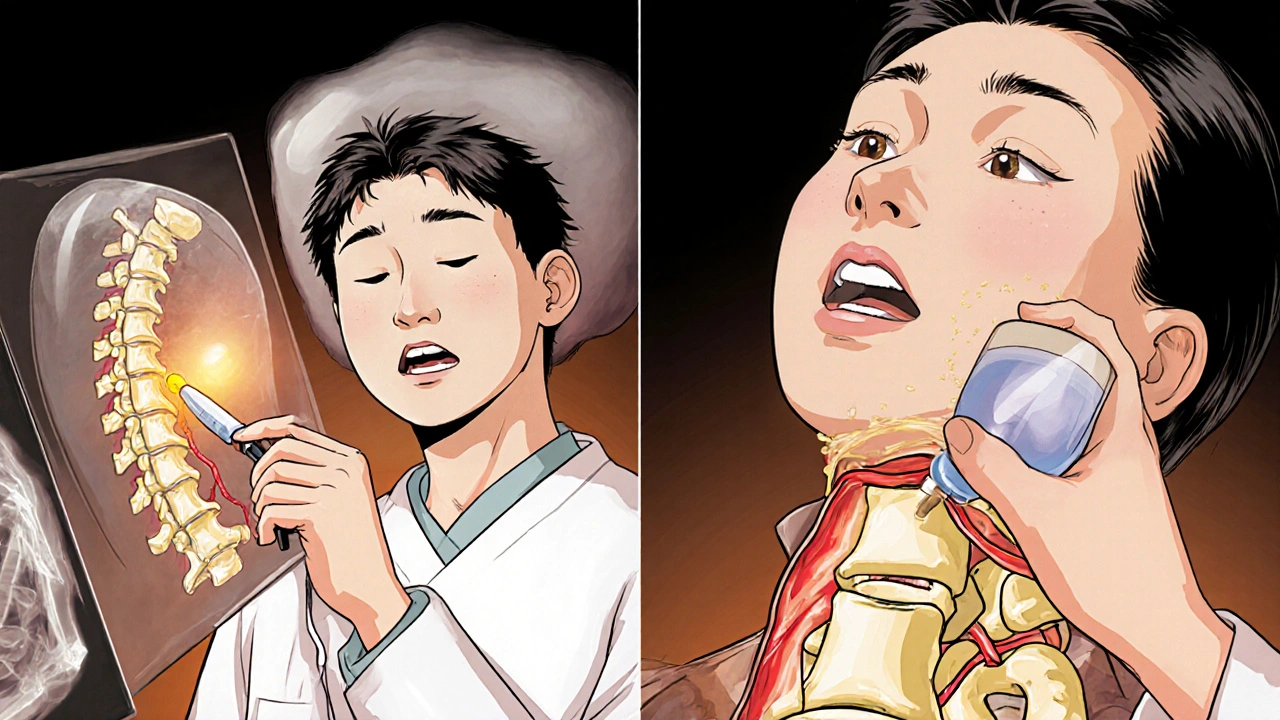Spinal Fracture Treatment: What Works, What to Avoid, and How to Recover
When a spinal fracture, a break in one or more vertebrae that can range from minor cracks to severe crush injuries. Also known as vertebral fracture, it can happen from a fall, car crash, or even osteoporosis in older adults. The way it’s treated depends on how bad it is, where it is, and what else is going on in your body. Not every spinal fracture needs surgery. Many heal with rest, bracing, and physical therapy — but skipping the right steps can lead to long-term pain or nerve damage.
There are different types of spinal fractures. A compression fracture, often seen in people with weak bones, where the front of the vertebra collapses like a crumpled can is common in older adults. A burst fracture, where the bone shatters and sends fragments into the spinal canal is more serious and usually needs imaging and often surgery. Then there’s the flexion-distraction fracture, caused by a forward force, like a seatbelt injury in a crash. Each one needs a different approach. Treatment isn’t just about fixing the bone — it’s about protecting the spinal cord, managing pain without opioids when possible, and rebuilding strength slowly. People often underestimate how long recovery takes. It’s not weeks. It’s months. And it’s not just about lying still. Movement, when done right, is part of healing.
Some treatments you’ll hear about — like long-term bed rest — are outdated. Modern care focuses on getting you moving safely as soon as possible. Braces aren’t worn for months anymore; they’re used for a few weeks to limit motion while the bone heals. Pain management leans more on non-opioid options, physical therapy, and targeted exercises. And if you’re over 50, you should be checked for osteoporosis — because if one vertebra broke, others might be next. The goal isn’t just to heal the fracture. It’s to prevent the next one.
What you’ll find in the posts below are real, practical guides on how spinal injuries are managed — from the medications used to control pain without addiction, to the physical therapy routines that actually restore function, and how to avoid common mistakes that slow recovery. You’ll see how back pain after trauma isn’t always the same as chronic back pain, and why some treatments work for one person but not another. This isn’t theory. It’s what doctors and patients are doing right now to get back to life after a spinal fracture.

Kyphoplasty vs Vertebroplasty: What You Need to Know About Vertebral Fracture Treatment
Kyphoplasty and vertebroplasty offer fast pain relief for spinal fractures caused by osteoporosis. Learn how they work, their differences in cost, risk, and outcomes, and which one is right for you.